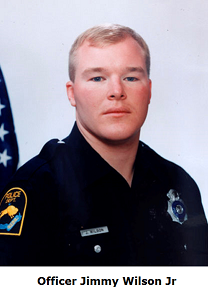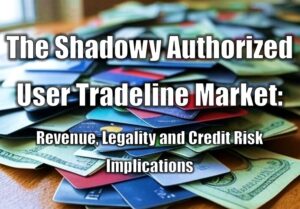Guest Editorial
We see it displayed almost daily on this Web Site. We’ve all read “Repo Madness” by the National Consumer Law Center (NCLC). Sadly the Repossession Industry refers to this as “Breach of the Peace”, because we are afraid to call it what it truly is VIOLENCE.
“Repo Madness” offered the Industry an opportunity to point out the shortcomings of the Forwarding Model (Renovo/Renaissance), yet, no one spoke. Renovo/Renaissance responded to the incidents mentioned in the report as “one in a million” incidents and continued down their path of Smoke and Mirrors by flaunting their SAS 70 designation while hiding their employee class action lawsuits over 1099ing their employee recovery agents. The only person to criticize “Repo Madness” was attorney Tom Hudson who wrote off the white Paper as “propaganda” based on “anecdotes”. What Hudson did point out was that 70% of the VIOLENCE in “Repo Madness” was by consumers at recovery agents. With regards to “anecdotes”, there is little statistical information available on the Repossession Industry.
The North American Industry Classification System (NAICS) states there are 1512 repossession companies in the United States. Repossession software companies puts the number around 5000. A recent report by ARA puts the number at 15,000. The most realistic number could be obtained by canvassing the Insurance companies that serve the industry. Until statistics are established we will have to rely on anecdotal information.
In 1995 I was teaching a seminar for State Farm Special Investigative Unit (SIU) personnel in New Orleans. The talk of the town was the New Orleans Police Department (NOPD). The NOPD was being investigated by the Department of Justice for corruption. The DOJ estimated 10-15% of NOPD was corrupt. The SIU people saw one of the symptoms of Corruption being wages paid to starting patrolman, “$14,000 a year, and all you can steal”, as they put it. In the Repossession Industry we have similar symptoms that lead not to corruption but VIOLENCE. A common symptom is demanding that recovery agents work CONTINGENT.
A well publicized incident several years ago in Missouri was highlighted by the recovery agents comment—“We only get paid if we bring in the iron and tonight we’re gonna get paid”, and over the debtors objections the recovery agent brought in the “iron” and a well publicized “anecdotal” lawsuit. In March, 1994 Tommy Deen Morris was on a routine repossession and as backing up to “hook” the collateral, the debtor opened fire on Morris and killed him as he sat in the driver seat of his truck, unknown to Morris was that another recovery agent had just been “ran off at gun point” by the debtor just 15 minutes earlier. This practice is known a DOUBLE ASSIGNING and is done often without the knowledge of recovery agencies involved. As in CONTINGENT assignments only the winner gets paid.
paid”, and over the debtors objections the recovery agent brought in the “iron” and a well publicized “anecdotal” lawsuit. In March, 1994 Tommy Deen Morris was on a routine repossession and as backing up to “hook” the collateral, the debtor opened fire on Morris and killed him as he sat in the driver seat of his truck, unknown to Morris was that another recovery agent had just been “ran off at gun point” by the debtor just 15 minutes earlier. This practice is known a DOUBLE ASSIGNING and is done often without the knowledge of recovery agencies involved. As in CONTINGENT assignments only the winner gets paid.
In August, 1995 second generation police officer Jimmy Wilson Jr. was making a routine stop for fictitious plates on a van. He was shot  dead in his vehicle, seat belt on and microphone in hand. Unknown to Wilson was that the van contained Bloods gang members, of which, member Kevin Allen had vowed not to go back to prison and opened up on Wilson Jr. with an AK47.
dead in his vehicle, seat belt on and microphone in hand. Unknown to Wilson was that the van contained Bloods gang members, of which, member Kevin Allen had vowed not to go back to prison and opened up on Wilson Jr. with an AK47.
So what does the Repossession Industry have in common with Law Enforcement? We are both First Responders, recovery agents are the first to respond to debtors “in person” and on the debtors own turf when a loan has gone “bad”. Recovery Agents deal with the same individuals (violent felons, drug dealers, and spousal abusers) that law enforcement does and they do it without a badge, a gun, or backup.
Yet the Lending Industry thinks it should be done at minimal cost by means of CONTINGENCY and DOUBLE ASSIGNING. To remove themselves from any litigation or liability the Lending Industry has taken a concept from the Mafia by layering themselves and using middlemen (Forwarders). As in “Goodfellas” Pauli didn’t talk to anyone, if they wanted to talk to Pauli they had to talk to his “lieutenant” and he relayed it to Pauli.
his “lieutenant” and he relayed it to Pauli.
In the early 90’s credit card fraud began to grow by leaps and bounds. First Data Resources the largest credit card processor in the world (headquartered in Omaha) had a “War Room” similar to the Strategic Air Command (also headquartered in Omaha). It highlighted all of the credit card fraud hot spots around the world. As credit card fraud evolved into “Identity Theft”, First Data found more revenue in selling fraud software applications to card issuers then it did in maintaining its own fraud department. “Identity Theft” had become the latest designer crime and card issuers wanted to show their customers that “they were fighting on the front lines”. As such Lenders are now paranoid as to how Non Public Personal Information (NPPI) is handled.
Over the years we’ve all read numerous accounts of Banks and Retailers having their systems hacked and customers NPPI accessed. During this time I have yet to hear of anyone hacking a repossession company or collection agency. Hackers don’t want the NPPI of “deadbeats” they want the NPPI of people with 700+ FICO scores. Yet the Repossession Industry must pay the price and is expected to go out and conduct one of the most extreme acts allowed under law (retaking someones only mode of transportation) with only a name and address and no background info on the individual they are dealing with. Would law enforcement?
Several years ago I stumbled upon the Association of Threat Assessment Professionals (ATAP). Assessing threat potentials to individuals and Homeland Security is their primary area of focus. Recovery Agencies and Recovery Agents should be privy to NPPI information in order to conduct its own threat assessment of individuals we are asked to recovery collateral from. We all have a very valid reason THE SAFETY OF OUR EMPLOYEES.
I find it interesting that Recovery Agencies and Lenders are now being required by the CFPB to keep a “Complaint Logbook”. If I were an attorney representing an injured recovery agent I would not only ask a Lender for their Complaint Logbook but I would also ask that Lender how many assignments they did not send out to recovery agencies, because they determined that the debtor was violent and threatened harm. Lenders should be required to keep a Threat Assessment Logbook that starts at the beginning of the collection process and determines whether or not the account should be sent out for self help recovery or should the lender proceed with a Replevin.
My business is located in Omaha, Nebraska. Nebraska is an Open Records State, I can get a copy of someone’s criminal “Rap Sheet” from the Nebraska State Patrol for $18. All I need is a birth date or Social Security number. All Recovery Agencies and recovery agents should have access to such information based on the simple “need to know” principle. Based on what I have learned from the ATAP and using Nebraska Justice Files I now conduct threat assessments on all new accounts.
CU Collector recently reported about a Spartanburg, SC incident involving a female debtor who stabbed a recovery agent while trying to repossess her vehicle, it went on to say she had previously assaulted two police officers. I too recently ran across a female debtor who felony assaulted two police officers, the difference was I knew it before my recovery agent left the office with the account and I knew the debtor was in Jail under $50,000 bond.
I recently had a conversation with Ed Marcum of the Recovery Agents Benefit Fund (RABF). I asked Ed how many Lenders and Forwarders have contributed to the RABF.  To the best of his memory he felt he could count that number on one hand, the largest contribution being GMAC years ago contributing $2000 to the fund because an agent had been murdered recovering one of their vehicles. He added that Anthony Gentile of Dynamic Manufacturing has always been a strong supporter by contributing a new Dynamic Tow body for fund raising` every year. To that I might add Scott Jackson of MVTRAC was high bidder on the tow body at a TFA conference and then donated it back to the Auction, that auction raised in excess of $20,000 for the RABF. This author finds it interesting that Forwarding entities love to use this web site at this time of year to issue a news release on how much money they have raised for a local or national charity. But then it should come as no surprise since this article deals with the CULTURE OF DENIAL that exists in this industry.
To the best of his memory he felt he could count that number on one hand, the largest contribution being GMAC years ago contributing $2000 to the fund because an agent had been murdered recovering one of their vehicles. He added that Anthony Gentile of Dynamic Manufacturing has always been a strong supporter by contributing a new Dynamic Tow body for fund raising` every year. To that I might add Scott Jackson of MVTRAC was high bidder on the tow body at a TFA conference and then donated it back to the Auction, that auction raised in excess of $20,000 for the RABF. This author finds it interesting that Forwarding entities love to use this web site at this time of year to issue a news release on how much money they have raised for a local or national charity. But then it should come as no surprise since this article deals with the CULTURE OF DENIAL that exists in this industry.
In closing, I’ve turned 60 this year and am entering into the third act of my life. As such the last few years I have been beginning to give back, sending money on an annual basis to the hospice house where my mother spent her last days and a small college in South Dakota where I earned my undergraduate degree. This year I am adding the RABF and sending them an annual check. I hope others will follow suit. I would also like to see the RABF publish an annual report of donors and how the funds are disbursed. Maybe we can begin to change this CULTURE OF DENIAL.
Mike Nikolas
Double Eagle Services
Omaha, NE











Thank you Mike. As usual, you are the “deep thinker” and not afraid to speak out. I’m amazed at the lack of responses to this very serious problem. It’s time all of the associations begin working together to combat the dangers we all face.
Please do not forget the generous donation made by DRN during last years NARS Convention. I believe they donated $5000.00 to RABF